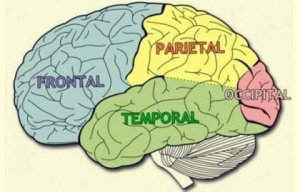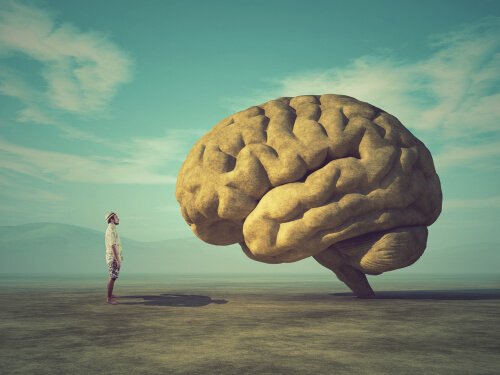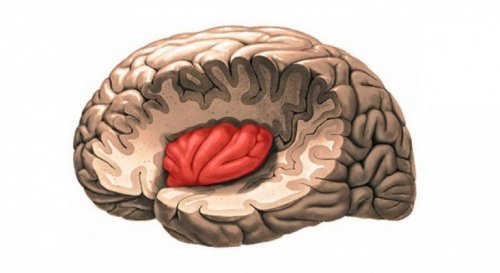Cerebral Lobes: Characteristics and Functions


Written and verified by the psychologist Valeria Sabater
Everything we are is in our brain. This amazing and immensely complex organ is a reflection of our successful evolutionary history as a species. The human brain is categorized into four different cerebral lobes. Our conscience resides in these lobes. We also create language, store our memory, and regulate emotions and many other processes in these cerebral lobes.
Famous Portuguese neurologist Antonio Damasio explains in his book Looking for Spinoza that the brain is more than a simple bundle of neurons. In fact, comparing this organ to a computer may still not cut it. The brain and each of its structures are a direct result of our interaction with our environment.
“The eye must concentrate, grasp the subject, and the brain will find a means to express it.”
-Paul Cézanne-
We are what we see, feel, experience, and the way we react to stimuli and circumstances. The brain takes shape with every experience. The cerebral lobes are the ones in charge of the processes in function of the characteristics. Identifying each one of the processes will allow us to have a better and more complete understanding of the human brain.

Cerebral lobes and their functions
When we think of cerebral lobes, we tend to make the mistake of imagining separate structures that are independent of one another. This is why it’s important to understand that there are no internal barriers between them. The four large areas that make up the brain always work in harmony and share information constantly.
On the other hand, although each cerebral lobe has its individual characteristics, this doesn’t mean that each one controls a specific task almost exclusively. Many activities and processes overlap in different cerebral regions.
This means that one area couldn’t function without the involvement of another. This is why, in the case of brain damage to a specific area, its functions can be compensated by another area. This may or may not affect the efficiency of the processes.
Moreover, even investigators disagree on where one lobe begins and the other ends. However, what they do agree on is that there are two clear hemispheres: the right and left.
This is why we can identify each of the four cerebral lobes that make up the brain in both hemispheres. And so, neurologists tend to talk about the right frontal lobe and the left frontal lobe and so on. Let’s see the characteristics of each cerebral lobe.
The frontal lobe
The frontal lobe is a clear result of our evolution. It’s located just behind the skull, near the forehead. It makes up the most acute part of our brain, the one that took the longest to evolve. Here are some of the diverse tasks this lobe is responsible for:
- Language and speaking. This is thanks to the Broca area, an exceptional region that allows us to turn thoughts into words.
- Likewise, the frontal lobe stands out mainly due to its cognitive processes, those sophisticated executive tasks that allow us to plan, focus our attention, keep long-term memories, understand what we see, regulate emotions, and so on.
- Also, the frontal lobe allows us to understand and react to other people’s emotions. It basically processes empathy.
- The frontal lobe regulates motivation and seeks rewards for our actions. Most of the dopamine-sensitive neurons in the brain are in this lobe.

The parietal lobe
- The parietal lobe is over the occipital lobe and behind the frontal lobe. It has multiple functions. However, what makes it stand out from the other cerebral lobes is that it’s responsible for sensorial perception, spatial reasoning, movement, and orientation.
- Additionally, this is the area where the brain perceives sensory information coming from our sensorial organs. It’s here where we process and regulate pain, physical pressure, and temperature.
- Likewise, thanks to this area, we can understand the nature of numbers. It’s very relevant for mathematics.
The occipital lobe
Among the other four cerebral lobes, the occipital lobe is the smallest but also the most interesting. It’s close to the neck and doesn’t have a concrete function. It’s almost like a path all the other mental processes have to walk on to reorganize and connect to other areas.
- This area participates in visual perception and recognition.
- The occipital lobe is especially important for our visual senses. In fact, it’s involved in several visual tasks such as pattern detection and processing and the sending visual information to the brain stem.
- It helps differentiate colors.
- It also participates in the thought process and emotions.
The temporal lobe
This lobe is located right next to the temples and regulates a lot of processes. As evidence suggests, associating a specific specialized task to a specific lobe is difficult. They all depend on each other and they interconnect and work together in harmony. The tasks that take place in the temporal lobe are:
- It helps us recognize faces.
- It also participates in language articulation and sound and music comprehension.
- The temporal lobe participates in physical balance.
- It regulates emotions such as motivation, anger, anxiety, and pleasure.
The insular cortex
Throughout the article, we’ve talked about the four cerebral lobes. From a neuroanatomical standpoint, many studies suggest that the brain has a fifth region known as the insular cortex. It’s a hidden lobe under the other four cerebral lobes. It’s a remote and complex area that shares space with diverse veins and arteries.
We don’t yet know much about the insular cortex. Nonetheless, experts have seen different processes and alterations in patients that suffer epilepsy and have damage in this particular area of the brain. This cortex participates in taste, control of visceral functions, and self-awareness. Since it’s part of the limbic system, it may also help control emotions.

The cerebral lobe limits are blurred
In conclusion, as evidence suggests, the cerebral lobes make up a fascinating map of the processes and connections in the brain. But it’s difficult to establish clear functional limits. The most interesting lobe is definitely the frontal lobe since it’s responsible for executive functions. In fact, it’s responsible for important processes such as planning or stimuli control.
All cited sources were thoroughly reviewed by our team to ensure their quality, reliability, currency, and validity. The bibliography of this article was considered reliable and of academic or scientific accuracy.
- Allen, P., Moore, H., Corcoran, C. M., Gilleen, J., Kozhuharova, P., Reichenberg, A., & Malaspina, D. (2019). Emerging temporal lobe dysfunction in people at clinical high risk for psychosis. Frontiers in Psychiatry, 10, 298. https://www.frontiersin.org/articles/10.3389/fpsyt.2019.00298/full
- Bao, B., Wei, H., Luo, P., Zhu, H., Hu, W., Sun, Y., Shen, J., Zhu, T., Lin, J., Huang, T., Li, J., Wang, Z., Li, Y., & Zheng, X. (2021). Parietal lobe reorganization and widespread functional connectivity integration in upper-limb amputees: A rs-fMRI study. Frontiers in Neuroscience, 15, 704079. https://www.frontiersin.org/articles/10.3389/fnins.2021.704079/full
- Kolb, B. (2021). Brenda Milner: Pioneer of the study of the human frontal lobes. Frontiers in Human Neuroscience, 15, 786167. https://www.ncbi.nlm.nih.gov/pmc/articles/PMC8761616/
- Tohid, H., Faizan, M., & Faizan, U. (2015). Alterations of the occipital lobe in schizophrenia. Neurosciences (Riyadh, Saudi Arabia), 20(3), 213-224. https://nsj.org.sa/content/20/3/213
- Uddin, L. Q., Nomi, J. S., Hébert-Seropian, B., Ghaziri, J., & Boucher, O. (2017). Structure and function of the human insula. Journal of Clinical Neurophysiology: Official Publication of the American Electroencephalographic Society, 34(4), 300-306. https://www.ncbi.nlm.nih.gov/pmc/articles/PMC6032992/
- Damasio, A. R. (2005). En busca de Spinoza: neurobiología de la emoción y los sentimientos. Grupo Planeta (GBS). https://books.google.com.ec/books/about/En_busca_de_Spinoza.html?hl=es&id=av3rGUfHTEEC&redir_esc=y
This text is provided for informational purposes only and does not replace consultation with a professional. If in doubt, consult your specialist.








